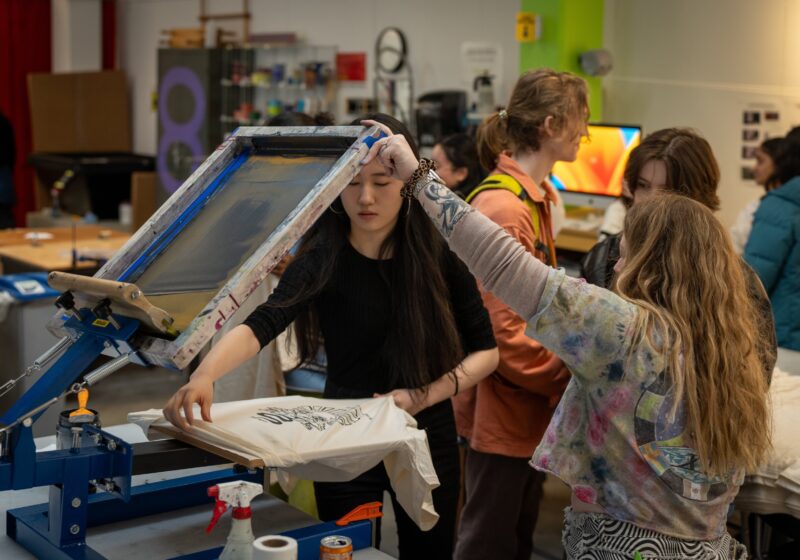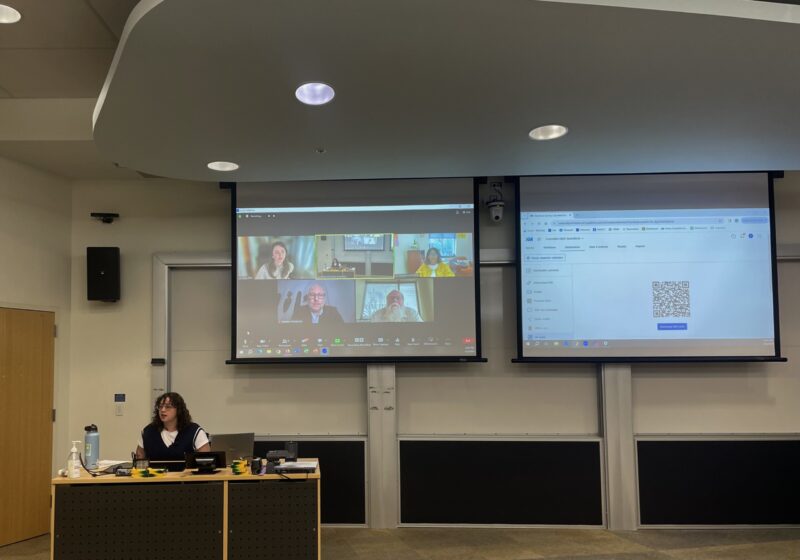Here’s the plot – you play as a young boy who meets up with a talking boat who tries to help you rescue your sister from a mysterious evil villain who has been capturing all the little girls with pointy ears amongst all the islands in the world. Only a video game developer like Nintendo can create a game based on that idea and make it one of the best games to be created to date.
“The Legend of Zelda: The Wind Waker” takes the gamer on a journey through a mystical world in an attempt to drive evil, yet again, from the world. To anyone who has played a Zelda game before, this formula seems pretty standard, but Nintendo has added many features to breathe new life into the “Zelda” saga.
The expectations for “Wind Waker” have been extremely high from gamers and critics alike. In development since right after the Nintendo64 release of “Majora’s Mask,” “Wind Waker” has been a highly anticipated addition to the line of games starring Link. Like former games, Link plays the role of the hero who must save the Princess Zelda and defeat Gannondorf to once again save the world. As the game progresses, Link must learn new skills and acquire the Master Sword in order to defeat his enemies. The formula is simple, but elaborate dungeons and involved side quests create a challenge to even the most experienced gamer.
However, a major drawback to “Wind Waker” is the low level of difficulty in battles throughout the game as I only died once in all the dungeons and boss fights. The puzzles are excellent and interesting, but similar to classic Zelda puzzles of old. An experienced gamer will likely solve many puzzles without much trouble, but there are a few that stumped even a hard-core Zelda fanatic like me. The level design is superb, with rich graphics showing every tiny detail imaginable. The bosses are large and lively, with many different strategies required to defeat them. Boss design is imaginative and original, and I often would be taken aback by the fluid animation of such enormous beasts. In fact, the enemy design in general is extremely well made, from simple bats to undead zombies to pirate ships.
Graphically, “Wind Waker” is a step ahead of any similar cell-shaded graphics present in any other game. Some gamers may at first be turned off by the “kiddy-like cartoon graphics” that the game features. However, any mature gamer would realize that the anime style graphics fit the game better then any other method that could be used.
This game is not just for kids, but is created in a way that appeals to any gamer. The effects from the anime style are not simplistic and actually have many intricate details that may be overlooked. For instance, by examining the fire in the game, one would notice how the heat waves distort that graphics in the background and how the surroundings are effected by the light cast by the fire. Or, one can look at the eyes of Link, which often lead to clues on what Link should interact with next. A great amount of detail has been put in the graphics, and overall they are perfect for the game.
Another important element in the game is the use of sounds and music. The sound effects are very good, from the sounds of waves in the ocean to the sound of metal against metal in an intense battle.
The music is exceptional, composed by the same director as every other Zelda game to date. Many classic Zelda tunes are remixed and altered, and the experienced Zelda gamer will recognize many of the songs.
Music plays an important part in the game itself, as the name of the game “Wind Waker” implies a musical baton used to conduct music in the game. Link must use his musical abilities in various points of the game, from changing night into day to warping throughout the seas in his boat to awakening legendary spirits. The sounds and music flow seamlessly with the graphical aspects of the game. In a whole, Zelda is a fine tapestry made with a perfect weaving of sound and visuals.
More important then the graphics and sound would be the gameplay itself. Since Zelda moved into 3D with the N64’s “Ocarina of Time,” the controls have worked reasonably well in the environments. Nintendo has continued to refine controls, and the usage of the GameCube controller is very intuitive for this game.
The regular analog stick is used to control Link, while the C-analog is used to manuver the camera. Although the default third-person views can be far from optimal, the player has full control of the positioning of the camera on screen, which is a major advantage in an action game. The B button is used for sword attacks, and A button for various options such as jump attacks, opening doors, and talking to other characters.
The Y, X, and Z buttons are placeholders for various inventory items, such as the boomerang or grappling hook. The most important control feature is the use of the L button, which is used in combat situations to “lock on” to an enemy target. This feature was found in earlier N64 games, and has continued to be an innovative feature to simplify the battle process. Overall, the controls are very easy to use and are learned with a minimal learning curve.
“Wind Waker” also includes the feature to link up with a separate Game Boy Advance system to unlock additional features. With the item called the “Tingle Tuner,” you can call upon another character, Tingle, to aid in exploring hard to reach areas to get specialty items in various locations throughout the game.
Although this feature is optional, it encourages a second person to partake in the game to assist the main player.
Being an avid gamer, and a long-time follower of the “Zelda” series, I am exteremly wary of giving a good review to this game just because it is a Zelda game.
I had high expectations, and it met and surpassed my wildest dreams. If you like video games, regardless of what genre you normally play, you must play “Wind Waker” for the excellent experience.
It appeals to all levels of gamers, and despite the general easiness of gameplay, it is a must have. “Wind Waker” is the reason to buy a Nintendo GameCube, and if you already have a GameCube you should have reserved it a year ago.
Re can be reached at sre@campustimes.org.





